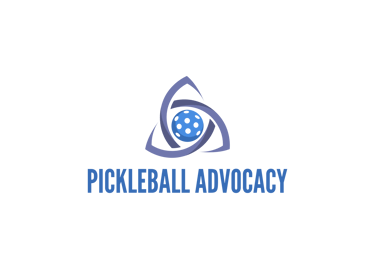Inside the Richmond Hill Tennis & Pickleball Strategy Meetings – October 2025
The City of Richmond Hill held public meetings on October 2 and 16 to discuss its new Tennis and Pickleball Strategy. Many pickleball players did not attend because the meetings were not promoted through the local clubs. This post explains what took place, what was presented, and why it’s important for players to understand the City’s direction as plans for future pickleball facilities take shape.
PAG
10/18/20253 min read


Low Attendance, High Interest
The City of Richmond Hill held two public meetings — on October 2 and October 16 — to introduce its new Tennis and Pickleball Strategy, a 15-year plan intended to guide future court development across the city.
While the topic drew great interest within the pickleball community, attendance at both meetings was surprisingly low.
Many local players were simply unaware the meetings were taking place. This lack of engagement was particularly disappointing.
What Was Presented
The meetings were led by Monteith Brown Planning Consultants, who outlined participation trends, demographics, and future court planning goals. A series of display boards summarized the following key points:
Bayview Hill Park: 4 dedicated pickleball courts and 6 tennis courts now complete.
Richmond Green Master Plan: Identifies a 12-court, year-round pickleball hub, targeted for 2030–2035.
Arena Pilot Project: 11 indoor concrete courts temporarily lined at Elgin Barrow and Bond Lake Arenas.
Heron View Park & Brickworks Park: Construction scheduled for 2026 pending budget approval — both to include multi-lined courts shared between tennis and pickleball.
Residents could mark maps to suggest new court locations and share input on priorities like lighting, shade, and surface quality.
What Residents Said
Among those who did attend, the message was clear and consistent:
Richmond Hill needs dedicated pickleball facilities — not shared or temporary solutions.
Players asked for:
Indoor and outdoor hubs with at least 8–20 courts;
Lighting for evening play;
Less restrictive booking systems and greater access;
Year-round play opportunities, similar to those of surrounding municipalities;
And a plan that treats pickleball as a standalone sport, not a subset of tennis.
Several residents also expressed concern that the Richmond Green “12-court hub” had already been predetermined — raising questions about whether public input would genuinely influence the outcome.
An Uneven Playing Field
While the meetings were polite and professionally run, the presentation reinforced the sense that tennis remains the dominant lens through which the City views racquet sports.
Boards devoted equal space to both sports — yet key topics like “establishing a community tennis club” were featured, while no equivalent pickleball partnership opportunities were mentioned.
By blending two sports with very different participation patterns into a single strategy, the City risks diluting pickleball’s voice and understating its explosive growth.
It was also evident that the City continues to view communication with the pickleball community through a cautious lens — reportedly concerned that the club “biases” engagement by encouraging its members to attend meetings or complete surveys. Ironically, this very approach limits balanced feedback by excluding the people who actually play the sport the most and are actively engaged with their local councillors, who typically respond with emails outlining the number of lined tennis courts we now have in Richmond Hill.
The Bigger Picture
Richmond Hill’s population is set to grow by 30% by 2041, with older adults and newcomers driving demand for accessible recreation.
Meanwhile, pickleball programs are routinely sold out, while tennis and baseball facilities often sit empty during prime hours.
Despite this, the City’s current plans delay meaningful investment in dedicated pickleball infrastructure until 2029–2035, effectively pushing progress beyond this council’s term.
Key Takeaways
The City acknowledges pickleball’s growth but continues to plan through a shared tennis-pickleball framework.
The Richmond Hill Pickleball Club — which runs successful City-partnered programs — was not consulted or notified of the meetings.
The Richmond Green 12-court plan appears pre-determined, limiting real input from residents.
Short-term fixes like arena floors and multi-lined courts remain the City’s main response.
The pickleball community remains engaged, organized, and eager to collaborate — if only given the opportunity.
Final Thoughts
The City’s Tennis and Pickleball Strategy will shape the future of court recreation in Richmond Hill for decades to come. For that reason, transparency, collaboration, and meaningful engagement with those who play — not just consultants and staff — must be at the heart of the process.
Until then, the pickleball community will continue to do what it has always done best: build, organize, and advocate — together.
